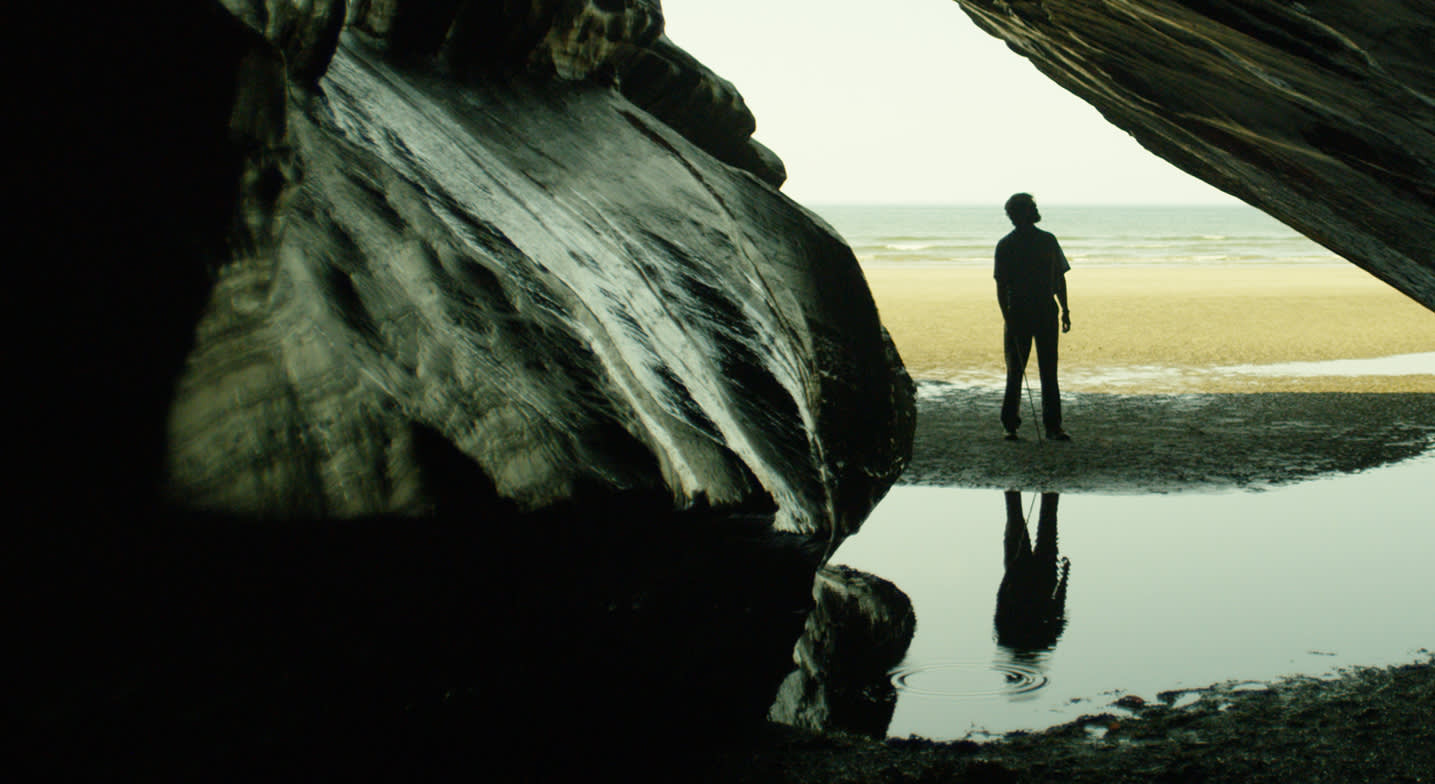"ENTER VIMEO VIDEO HERE"
Notes on Blindness from The New York Times - Video on Vimeo.
The movies are a primarily visual medium, yet some of the best of them gravitate toward the depiction of what seems visually unrepresentable. One of the year’s most ambitious feature films, Peter Middleton and James Spinney’s Notes on Blindness, is a documentary that makes imaginative, textured use of audio storytelling to turn the experience of losing one’s sight into a testament to the intensity of other modes of perception. The film uses a variety of techniques to depict what its human subject called a “world beyond sight.”
“About five years ago,” Middleton told me, speaking via Skype from London, “James and I started researching various first-person testimonies on the blind experience, and we came across this incredible book called Touching the Rock, which was, in effect, a transcript of John Hull’s audio diaries.”
In the early 1980s, Hull, an Australian-born professor of religious education at Birmingham University in England, as well as the father of several young children, began to go blind at the height of his academic career.
His initial devastation eventually gave way to a more inquisitive, philosophical approach. Hull decided to use his experiences to find a way to bridge the abyss between blind and sighted people, to convey his deepening conviction that those who can’t see gain access to hidden depths of everyday experience. Over the course of a few years, he dictated his memoirs of blindness, coming to terms with his sight loss as “a dark, paradoxical gift.”
These recording sessions were, in part, Hull’s way of shielding his grief from his family, and his musings are often achingly personal: Hull worries about the ways that blindness will affect his relationship with his wife and whether he can continue to interact with his kids. He conveys, with equal vividness, the difficulty of crossing the street and of losing sense-memory of the landscapes of his childhood.
They began by taking individual passages from Hull’s audio diaries and making a series of short films.
When Hull’s book first appeared, it struck an international chord with neurologist Oliver Sacks calling it “a masterpiece.”
For the young filmmakers, it was an inspiration. “In the foreword to the book,” Middleton said, “it mentioned that it had been recorded, and we thought this might be interesting material to explore in a long-form documentary. We approached John and built a relationship with him and his wife Marilyn, and after about six months, he shared with us this box of old C-90 cassettes, about 16 hours’ worth in total, which document his period of adaptation to blindness.”
Middleton and Spinney realized that they had a treasure trove of source material, and they began by taking individual passages from Hull’s audio diaries and making a series of short films. The shorts were an opportunity to experiment with different ways of interpreting Hull’s journey from grief to grace.

Notes on Blindness Part 3
Rainfall (John Hull, Peter Middleton, James Spinney)
After screening the short Rainfall at Toronto’s prestigious documentary festival Hot Docs, where it won the Best Short Documentary award, they were commissioned by the New York Times’ Op-Docs to make another 14-minute short, “and that allowed us to get the momentum to get funding in place for the feature film. Looking back, it was quite an organic process growing the project from short to feature.”
The filmmakers’ goal was to create a film in which the sound motivates the image. Using a technique that maps dramatic performance onto documentary sound, Notes on Blindnessreenacts scenes from Hull’s life using professional actors to give voice to primary source audio.
The effect of these performances, fixed to the rhythms of the recorded dialogue, is often uncanny.
“The process was very idiosyncratic,” Middleton said. The actors who played John and Marilyn Hull had no experience of working with the lip-syncing technique, but “they both had a sense of musicality and a way to inhabit those voices in quite a relaxed way. They listened to the recordings so closely that they found depths in those recordings in the breaths and the pauses, studying the lilts and rhythms and cadences of each line.” The effect of these performances, fixed to the rhythms of the recorded dialogue, is often uncanny — especially since the recordings generally retain their degraded analog quality.
“Throughout the ’80s, [Hull] would use tape recorders the same way others might record a home movie,” Middleton said. “He’d set up these tape machines around the house, for special occasions especially, and make these ambient recordings. That formed a lot of the texture of the film. All of the family’s voices throughout the film … it’s authentic documentary audio. Along with this trove of archive tapes and John’s diaries, we recorded interviews with John and Marilyn. And that formed the present-day narration with them reflecting back on the period.
Initially the team had approached those interviews as a form of research but became fascinated by John and Marilyn’s reactions to revisiting the recordings three decades later. They were “processing and reinterpreting the past in the present,” Spinney said. “That really transformed the story into more of a love story.”

Spinney continued: “We were interested in the interplay between those two timeframes. Part of what John was struggling with when he first started keeping the audio diaries was that his sense of identity was thrown into flux by sight loss. He was having to reconstitute his whole sense of self as a blind person. We were speaking to John over the course of the five years we made the film, and by then he was an entirely different person. The process of revisiting those audio recordings was like reopening an old wound. We feel very lucky that John and Marilyn were willing to go through that process for the project.”
After completing the interviews, Middleton and Spinney worked with the various sound components, sending audio edits back and forth with Supervising Sound Editor Joakim Sundstrom, and tried to excavate a story from them. “We had, in effect, a 90-minute audio piece before we had shot a single frame,” Middleton said. “But then when we were filming, we didn’t capture any sound on set,” Spinney added. Instead of capturing live sound, the team did extensive foley work, recording to match the movements of the actors who were themselves trying to lip-synch to the original recorded dialogue.
Sundstrom had to create three separate sound mixes and spent more time with his audio team in post-production than Middleton and Spinney spent editing the film.
“The visual component of the VR is secondary. It’s about immersing yourself in John’s acoustic world.”
The feature film received its world premiere at the Sundance Film Festival New Frontiers section, where it played alongside a companion Virtual Reality experience, Notes on Blindness: Into Darkness. While the feature film is marked by its lush, expressive cinematography, the VR project is an attempt to navigate the experience of blindness.
“The VR experience builds on John’s meditations about conceiving of space through sound,” Middleton said. “He talks a lot about what he calls ‘acoustic space,’ getting a sense of depth, detail, and contour in your environment from the multilayered patterns of sound around you. It only became VR quite late in the day.” The filmmakers used VR to work with binaural sound, which creates an effect that localizes sound with ultimate precision and plunges listeners into an almost hyper-real soundscape.
For Spinney, “the visual component of the VR is secondary. It’s about immersing yourself in John’s acoustic world.” Middleton and Spinney worked with some of the UK’s leading practitioners of research into audio-visual accessibility, giving them the opportunity to experiment with creative approaches to the form. In order to make the film accessible to blind and partially sighted audiences, they are making Notes on Blindness available on-demand with four soundtrack options: the original film soundtrack; two “audio-described” versions with narrators relating what’s happening outside of the dialogue; and an “enhanced sound design” version.
For the latter option, which evokes rather than explains what appears onscreen, Middleton said “We re-edited the film to provide more narration from John and Marilyn, to add music cues, to use sound effects and smooth out sound transitions to make it a coherent 90-minute sound piece. We mixed it with the picture off.”
In every incarnation, the Notes on Blindness project is one of contemporary cinema’s most captivating experiments in reorienting the senses. In the film’s most striking scene, Hull recounts the way the sound of falling rain restores a sense of three-dimensionality to his environment. “Rain throws a colored blanket over previously invisible things,” Hull wrote in his memoir. “Instead of an intermittent and thus fragmented world, the steadily falling rain creates a continuity of acoustic experience.” Middleton and Spinney’s film invites viewers and listeners to exercise the faculties at our disposal to find the depths of the invisible.




